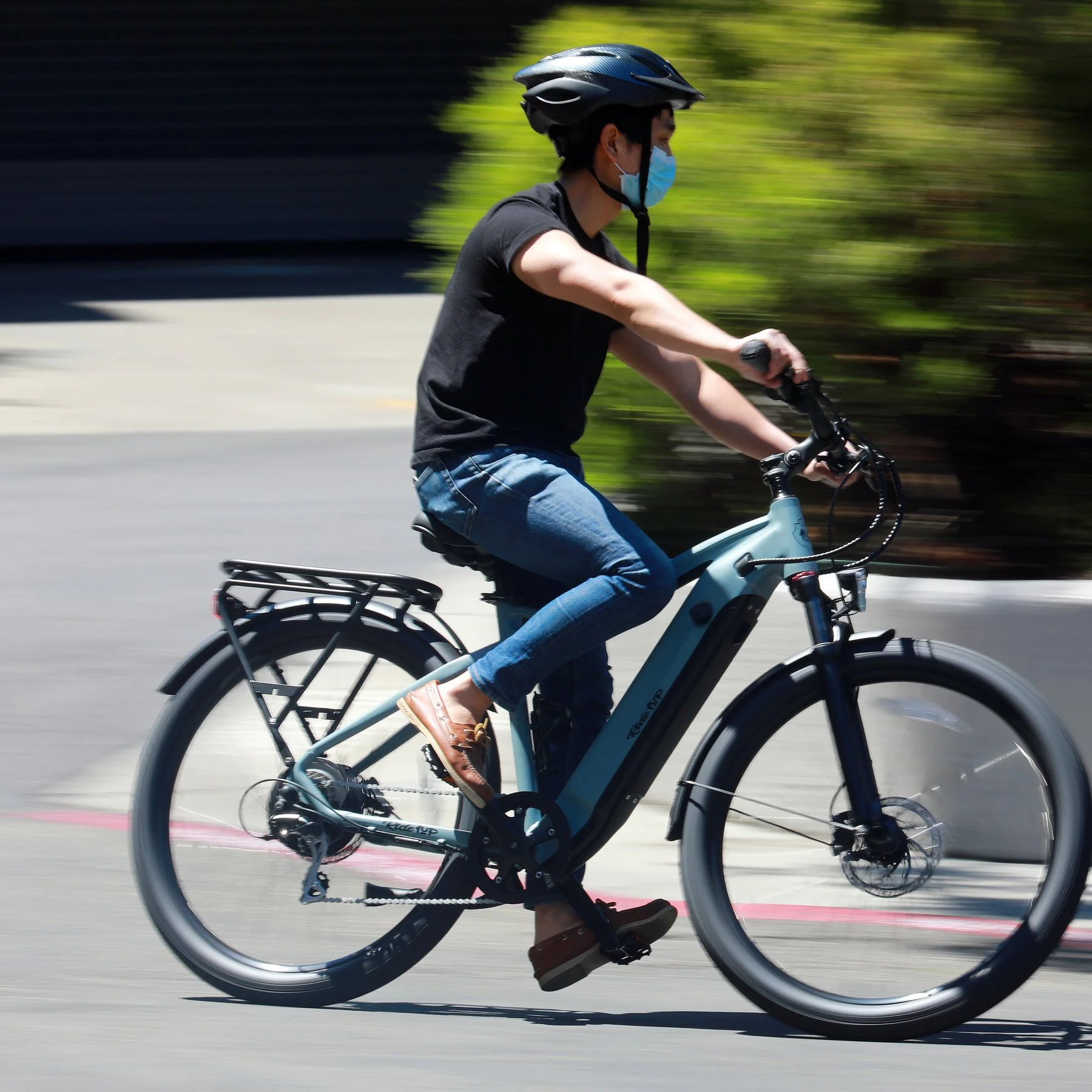Buying Your First E-Bike
Whether you’re an occasional rider looking to go on longer rides, or a commuter who wants to quicken their commute, an e-bike is a fantastic way to get more out of your cycling experience. With the popularity of e-bikes absolutely exploding in the last five years, there are more options than ever before available to prospective riders. Although this means there are some fantastic bikes at all sorts of price points, it can also be quite overwhelming for a first time buyer. When looking for your new e-bike, here are a few things to keep in mind.
Before diving into specific features, you’ll first want to identify what type of riding you’re going to do. If you’re looking to cruise on roads or bike paths, a more upright style will be the way to go. For those who want to ride on dirt or singletrack, a mountain or gravel e-bike is where you’ll want to start. Having a specific style of bike to look for will be extremely helpful for filtering your options and eliminating bikes that don’t fit your needs. If you’re not sure what the differences between the different styles of bike are, a great place to start is your local bike shop. Asking them what specific features are found on each style of bike will help you know what to look for in your future bike.
The first feature most will think of when looking at e-bikes is the motor. It’s the heart of the bike, and where most of the cost will go. When comparing different bike models, it’s important to look at the specific specs of the motor. Most manufacturers will list the wattage rating of the motor; the higher the wattage, the more power the motor is capable of putting out. There are also different classes of bike as well. Class 1 bikes offer pedal assistance up to 20mph, and are a great option for those looking to ride on bike paths or offroad. Class 3 bikes feature a more powerful motor and assistance up to 28mph, perfect for commuters. Keep in mind that the more powerful motors will come at a higher price point, so it may be better to choose a higher quality bike with a less powerful motor than a low quality bike with a powerful motor.
There are also two main styles of motor available on e-bikes, hub drive and mid-drive. On a hub drive motor, the motor mechanism is located inside the rear wheel hub. These bikes are often much more economical, and there are even options to buy a motorized wheel to convert an existing bike to an e-bike. The downside of this style is that they don’t provide as much power, and the extra weight on the rear wheel can damper ride quality and place extra stress on the rear of the bike, sometimes leading to lessened longevity of components. A mid-drive e-bike is usually more expensive, but with the extra cost you get a much more balanced ride, and higher quality motor options that will most likely last a lot longer than a hub drive system.
After exploring motor options, it's important to look at the other components that come on the bike. A bike may come with either an external cassette style shifting system, which is easily serviceable and great for recreational riders, or an internal hub system, which provides great durability for commuters. Some models may offer more gears or nicer hydraulic brakes when compared to similar models offered by different brands, which will greatly improve the ride quality. Components made by a well known manufacturer like Shimano or SRAM will also be a better buy; they are known for their dependability and easily serviced at nearly all bike shops. Some manufacturers spec their bikes with proprietary components, and these can sometimes be of lower quality and be hard to replace or repair if there are problems down the road.
When comparing manufacturers, you’ll also have the option between companies that provide a direct to consumer approach like RAD or Propella, or a bike shop bike like Trek or Specialized. Direct to consumer companies usually are able to provide a less expensive product, and can be a great option for those on a tighter budget. Unless you are mechanically inclined, you’ll most likely have to take the bike to a shop for assembly which can be anywhere from $150 and up, so keep that in mind when budgeting. The down side to a direct to consumer bike is the lack of local support; most bike shops will only have a basic knowledge of the product and may not have the ability to fix issues that may arise. Many direct to consumer companies also don’t do the same rigorous testing bike shop brands do, so be sure to do thorough research to avoid purchasing a low quality or even dangerous product.
On the flip side, a bike shop brand like Trek or Specialized will usually come in at a higher price point. If a bike shop brand fits your budget though, you will have a lot more local support from the dealer when purchasing the bike, and down the road for maintenance and repairs. The product from a bike shop brand will usually be of higher quality overall as well, meaning more miles and a better riding experience from the product. If you have warranty issues you’ll have a network of locations you can visit to have your questions answered, which will save you headaches.
E-bikes are a phenomenon that is here to stay. They are a great option for improving the rider experience for a number of reasons, and are also tons of fun! With all the options available at a wide array of price points, starting your search can be overwhelming. With some basic criteria, hopefully it makes starting the search for your new e-bike a bit easier.
